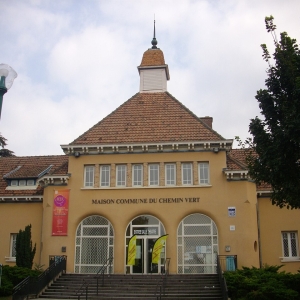
Chemin Vert
Reims, France
Inspired by the tradition of Social Catholicism, Cité-jardin du Chemin Vert is a garden city founded in 1922. The design was ground-breaking for the period and comprised houses which, coupled with community facilities and a church, offered decent living conditions for large families. Even today, it is regarded as a prototype French garden city.
| Garden City Type: | Mixed (housing association / municipality / other) |
| Country: | France |
| City: | Reims |
| Years of construction: |
1922 Start construction
|
| Initiator/client: | Le Foyer Rémois |
| Architect or related: |
Jacques Marcel Auburtin Jacques Marcel Auburtin (sometimes called Jean-Marcel Auburtin; May 17, 1872 - August 18, 1926) was a French architect. In 1911 he was the co-founder of the Société française des Urbanistes (French Society of Urban Planners). |
| Heritage status: | Yes |
| Explanation: | The Chemin Vert Garden City holds 'Architecture contemporaine remarquable' (Outstanding contemporary architecture) status. The Chemin Vert Garden City also forms part of the Champagne Hillsides, Houses and Cellars included on UNESCO's World Heritage List. |
| General condition of Garden City: | Good condition |
General description
In 1911, Jean-Baptiste Langlet, the mayor of Reims, went to England to visit a series of social housing operations, accompanied by a delegation of industrialists such as Georges Charbonneaux. A year later Le Foyer Rémois, an affordable housing agency spearheaded by Charbonneaux, was founded. Its aim was to improve the standard of housing for large working-class families in Reims. After the First World War, which left Reims in ruins, the plans were finally executed.
To this day the houses are still owned by Le Foyer Rémois.
Architecture / Urban planning
The area is laid out around a large square – Place du 11-Novembre – where the main community facilities are located: a gym, children's centre with a home economics school, day nursery, clinic etc. A community centre, completed in 1925, housed social and cultural facilities: a library, meeting rooms, a community hall with capacity for 500 people etc. In total 617 small houses were built, based on 14 different designs. The curved streets and small dead ends recall the English models.
Building of the church began in 1923. Classified as a historic monument, it was decorated by some of the major artists of the period including Maurice Denis, René Lalique and Gustave Jaulmes.
Sources
- Website URL
- Website URL
Minicipal Dreams: Chemin-Vert, Reims: a French ‘Garden City’
- Publication
FOCUS: La Cité-Jardin Chemin Vert Reims [in French]






